The name Cenote El Pit really doesn’t do this cenote justice. However, it pretty accurately sums up the topography you’ll encounter while diving the pit cenote near Playa del Carmen and Tulum.
If you can look past the unflattering name, you’ll find one of the most unique and beautiful cenotes to dive in Mexico. A favorite of many divemasters, the pit cenote is a special and unique cenote to dive.
Related Article: Best Cenotes Near Tulum
How to get to the Pit Cenote
The Pit Cenote is located inside the Dos Ojos Natural Park, 22km north of Tulum, about 54km south of Playa del Carmen, 28 km from Xpu Ha, and 278 km from Merida in the Riviera Maya. There are large signs along the highway for “Dos Ojos Cenote”, turn in here and follow the road to reach the fee & registration building.
Here you will need to pay the cenote entrance fee and dive fee. If you are diving with a dive shop, they will typically handle this process and fee for you.
Related Article: Tips for Renting a Car in Cancun
Once inside the large Dos Ojos Park, follow the dirt road past the Dos Ojos Cenote, further into the park until you reach signs for “The Pit Cenote”. There is a bumpy dirt road all the way to the Pit Cenote. There’s parking for divers, and each parking spot has a table to assemble gear. There are also basic restroom facilities right at the cenote.
There are wooden steps all the way down to the opening of The Pit and a small platform to enter the water from. There is also a hoist to lower and lift your gear in and out of the water, tips expected for this service.
Related Article: Best Cenotes in Tulum & Mexico
Diving the Pit Cenote
Most visitors to the Yucatan book cenote dives in the cities they are staying, and the dive shops will arrange transportation and equipment rentals. Cenote diving is a popular activity; there are many dive shops to choose from.
We dove with Scuba Playa and would rate them as average. Overall, everything went well, and the equipment was in relatively good shape. The concierge at Elements Playa del Carmen recommended a few dive shops in town. We visited two to ask a few questions and check out their dive equipment.
The cheapest cenote diving package we’ve seen is this two-tank cenote dive, click here. I wish I had booked this online because no dive shop in Playa del Carmen had priced this low. Highly recommend booking online here in advance, not only for the price, but then you can pay by credit card in USD instead of taking out money to pay in pesos.
Park fee for diving the pit: 570MXP combined with a Dos Ojos dive
The main draw to the Pit Cenote is the beautiful light beams that dance as they illuminate this deep cavern dive. An eerie layer of hydrogen sulfide toward the bottom of the main cavern makes for some interesting pictures.
To get the most out of this dive, you should be Advanced Open Water certified or higher. The max depth of the main cavern is 40 meters, and the acid layer at around 27 meters.
Before or after a cenote, make sure to check out nearby Riviera Maya attractions.
*When looking for the best price and biggest selection of hotels in Tulum, check prices on Booking.com. We’ve found they are the best option and have a great cancellation policy.*
Topography of the Pit Cenote
The Surface of the Pit Cenote
At the surface, a 10-meter oval-shaped opening opens up to a much larger cylindrical cavern. At the surface, there is an overhang with some stalactites clinging to the ceiling.
At 10 meters, the pit opens up to a further overhung cavern. At the edges of this overhang are rimmed with large stalactites.
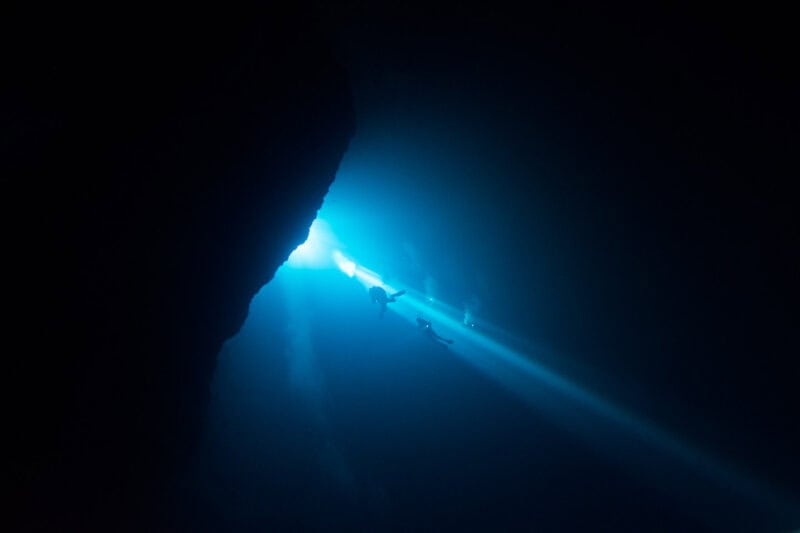
The Light Beams of The Pit Cenote
The main draw for most divers is the dancing light beams that fill the cavern on sunny days. The narrow opening lets streaks of light into the pit cenote, and the crystal clear waters let the light reach all the way to the bottom, nearly 40 meters.
It’s best to dive this site on a bright sunny day to have the best chance of seeing the light beams. Some of the best photos of the light beam will come from around 10-12 meters just above the fresh and saltwater mixing layer.
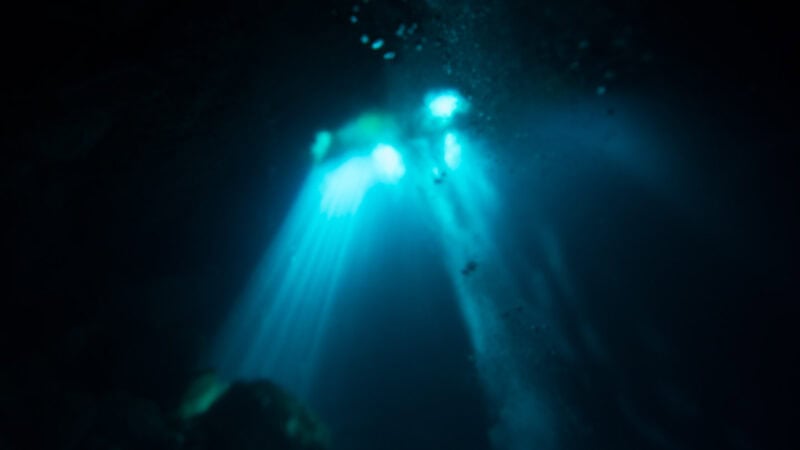
Halocline: The Fresh & Salt Water Mixing Layer – (Around 12 Meters)
Where the fresh and salt waters meet can very be poor visibility. At this level, the water appears blurry because of the way the light refracts in the two different waters.
If you take photos in this layer, they will appear out of focus. The light beams were amazing on our dive while we were going through this layer, but none of our shots came out.
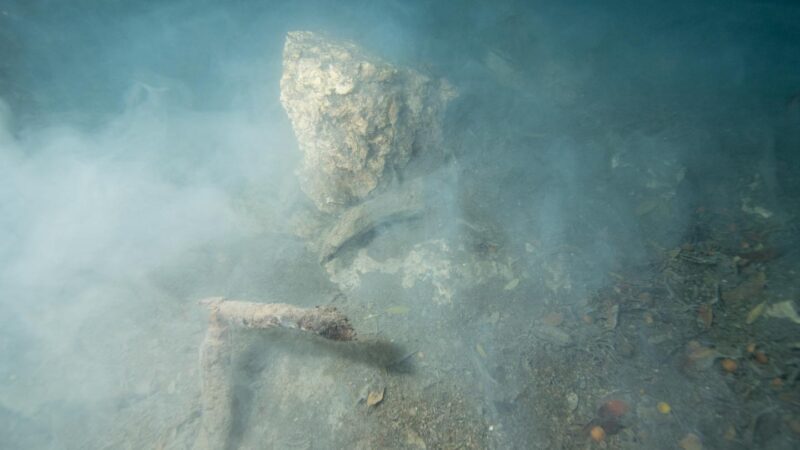
The Hydrogen Sulfide Layer of The Pit Cenote (Around 27 Meters)
Toward the bottom of El Pit Cenote, a cloudy layer almost looks like you are diving through the fog. This is a natural phenomenon, and it’s made of hydrogen sulfide suspended in the water from the breakdown of plant material and bacteria.
This layer can generally be found around 27 meters and is around 2-4 meters thick. This layer sits on top of rocks that have fallen at the bottom of the main cavern, and there are also eerie tree branches lying in the acid fog. The Rocky bottom of the Pit Cenote (25-40 meters)
The layer of hydrogen sulfide in El Pit is thin and whispy compared to the thick and dense cloud found in Cenote Angelita. Diving Angelita should also be very high on your list of places to dive while in Mexico.
The Rocky bottom of the Pit Cenote (25-40 meters)Rocks from the
Rocks from the collapsed opening of the cenote lay on the bottom, stacked higher toward the center of the pit. The acid layer covers the tops of the rock pile, and on top of the rocks, some tree branches are hanging in the fog.
Deeper diving in El Pit Cenote
What most don’t know about this cenote is that it’s actually almost 400 feet (121m) deep. Multiple passages lead to other rooms that connect to El Pit.
Tamaco Arm of El Pit Cenote (around 15 meters)
Inside the main chamber of The Pit Cenote is a corridor that runs horizontally for thousands of feet. There is a permanent line at the mouth, but advanced training is required to enter.
The Pit Cenote FAQ:
- How deep is El Pit Cenote? The deepest part of the Pit Cenote is around 40 meters in the main portion of the cave. However, El Pit has caverns stretching down nearly 400 feet deep.
- What time of day is best to dive the Pit Cenote? The best days to dive the Pit Cenote are sunny days from the late morning to the early afternoon. This time of day has the best chance of seeing the light beams from the sun’s rays in El Pit.
- What is the cloudy layer in El Pit Cenote? hydrogen sulfide
- Is the Pit Cenote freshwater or saltwater? The top 10-12 meters is fresh water, and then there is a mixed layer of fresh and saltwater. Below 12 meters is saltwater.
- How deep is the acid layer in the Pit Cenote? The layer of acid is suspended at around 27 meters.
- Can I bring a camera into the Pit Cenote? Yes, cameras are allowed in the pit, small underwater cameras like a GoPro are free, but for larger “Professional” Cameras, there is an extra charge. The cost to bring a professional camera into the Pit Cenote is 300MXP or 500MXP for a combination ticket for both the Pit and Dos Ojos Cenotes. I did have to purchase a photo ticket on my dives. If you are snorkeling, I suggest a GoPro dome for those unique over-under shots.
- What other cenotes nearby do you suggest for diving? One of my favorites for diving and swimming is Cenote Calavera, located right outside Tulum.
Tulum Packing List – Pack This & Not That
Places in Mexico to Visit Before or After Cenote El Pit
If you’ve got more time to explore Mexico, there are some amazing places in Mexico nearby you should check out. If you can’t go on this trip, consider them on your next trip. Make sure to check out some of our other Mexico articles to fuel your wanderlust.
2024 Isla Holbox Ultimate Guide – Must KNOW Travel Tips
Is Isla Holbox worth the trip? YES! Holbox Mexico is one of the best places in Mexico to visit. Skip Tulum! 2024 Complete Holbox guide with things to do in Holbox, best restaurants, where to stay, how to get to Holbox, and more.
5 Things To Know BEFORE Renting a Car in Cancun
Don’t rent a car in Cancun without reading this first! Cancun car rental guide: driving in Mexico tips, common scams, what to do if police pull you over, best rental car company, and more.
Ultimate List Of The Best Cenotes in Mexico
Over 6,000 cenotes in Mexico, guide to the best cenotes in Tulum, Playa del Carmen, Merida & Cancun. Cenote map, entrance fees, hours & more.
Is diving in a cenote on your bucket list? There are a ton of amazing cenotes in Mexico, but El Pit Cenote is one of the best!
Don’t forget to pin me for later!
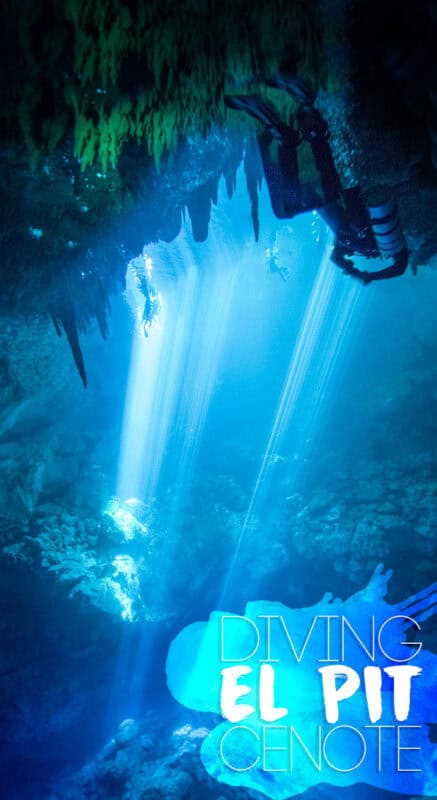
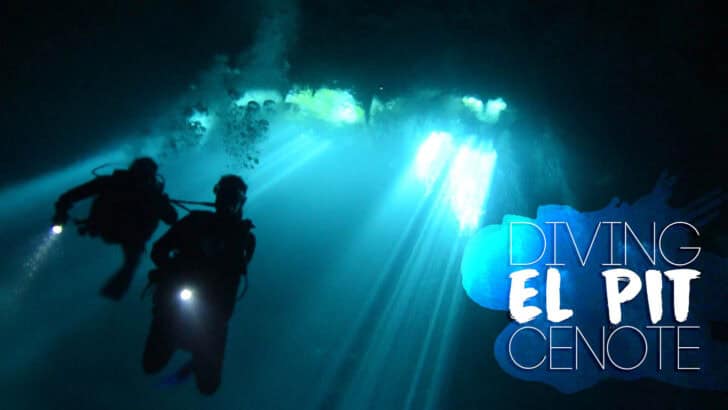
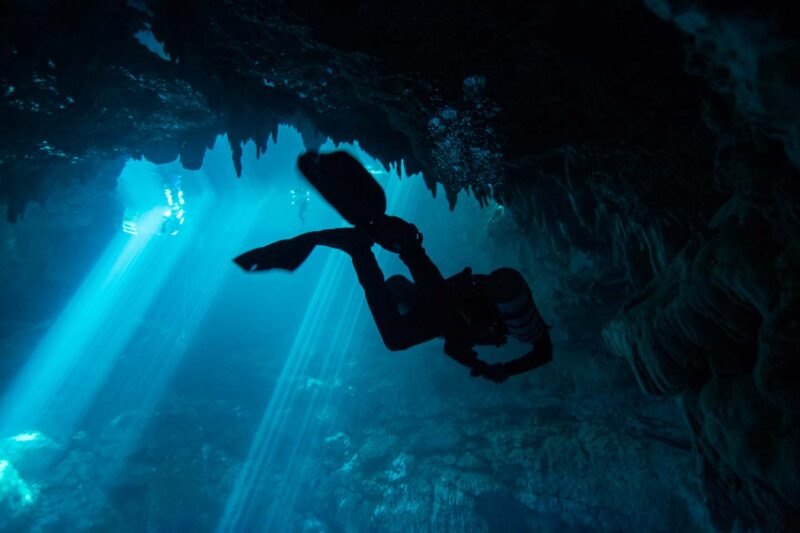
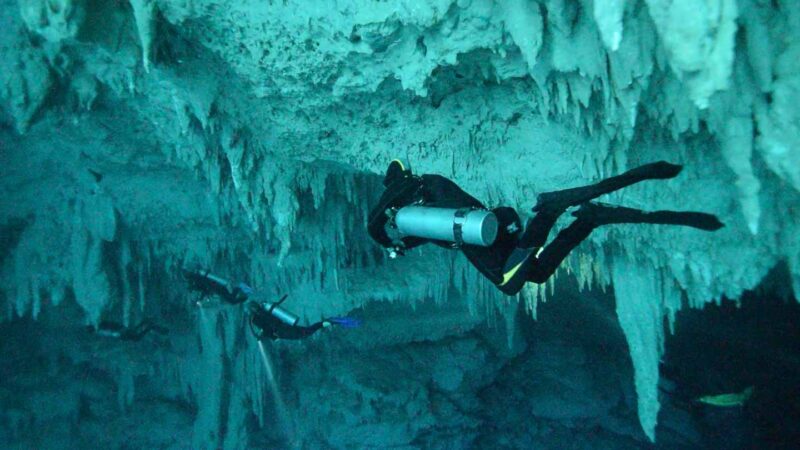
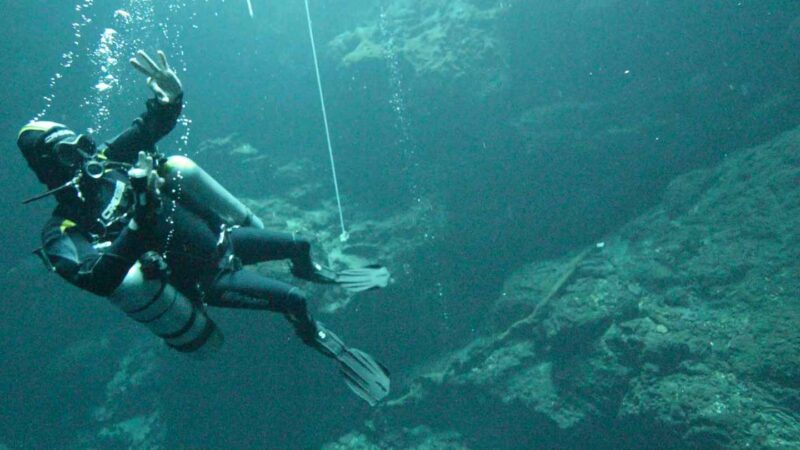


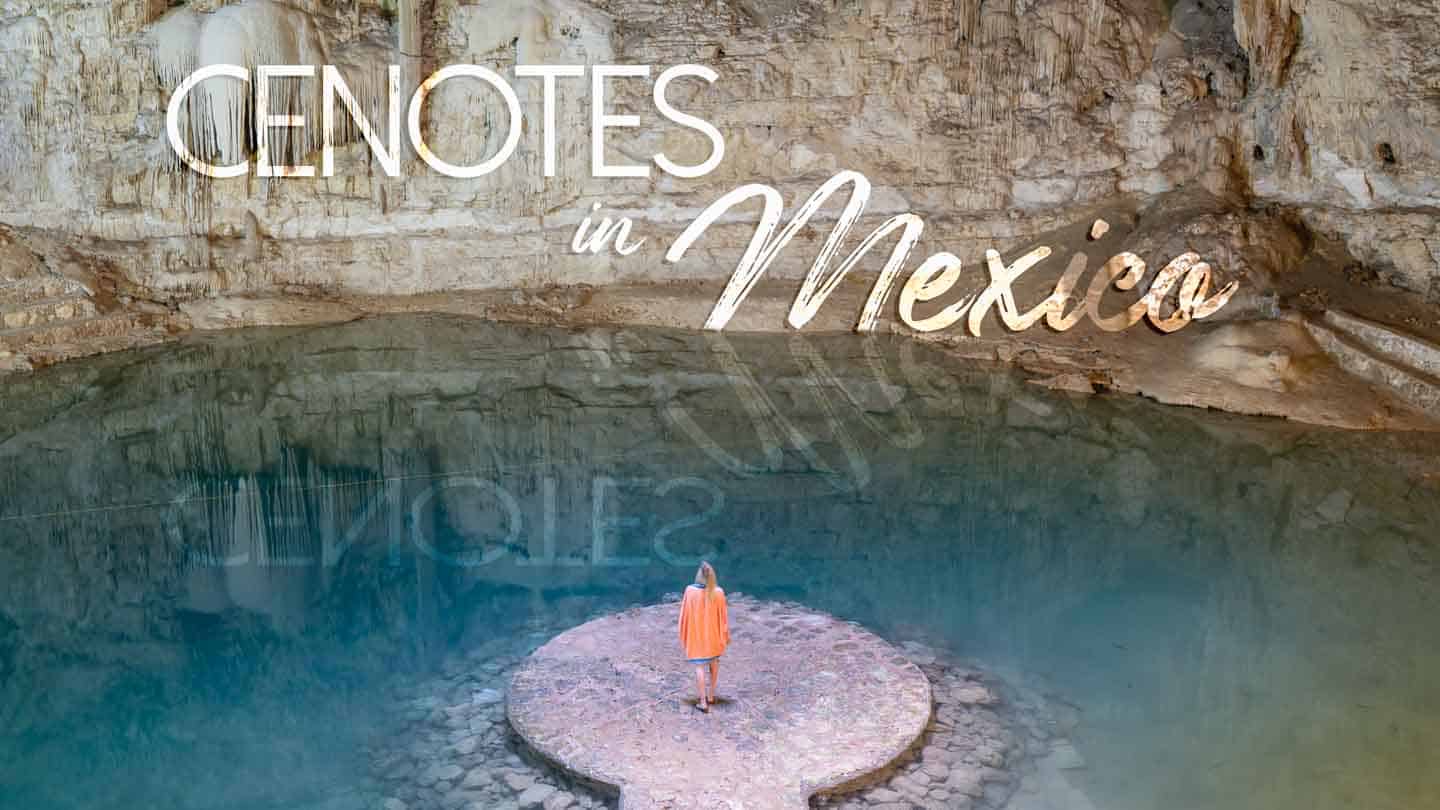
Arsenio Lopez Navarro
Friday 5th of February 2021
Is it possible to freedive in El Pit?
Adam
Thursday 16th of December 2021
Yes, you can free dive the pit. There are a few local dive shops that will take you.
Andrew A
Thursday 15th of November 2018
November 15th, 2018. Diving Pit cenote will blow you mind forever. The depth, topography, deep hypogean environment are beyond words. Second dive is a must to solidify the experience. Dive the Pit. Won't regret it.
Adam
Monday 4th of February 2019
Totally agree - one of my favorite dives anywhere in the world!
Roxanne Rodriguez
Tuesday 26th of June 2018
Just a small correction, Independent diving at the Pit is NOT allowed. Cavern divers must be accompanied by a guide that is registered at the Dos Ojos park. This policy is to promote safety and conservation as well as for liability issues. Otherwise great article!
Adam
Saturday 21st of July 2018
Roxanne,
Thanks for that info, we'll make sure to correct it.
Chloe
Tuesday 6th of February 2018
Scuba diving is one of my biggest passions. The main reason I love diving is the adventure, because you never know what you will found below the water surface. The second reason would be the wonderful diversity of the marine life. In the past years I've collected a series of underwater photos which I proudly store in the logbook, along with all my diving logs.
Adrian S
Sunday 7th of January 2018
Amazing! Congrats and thanks for sharing!
Hannah Lukaszewicz
Monday 8th of January 2018
Did you have a chance to visit the cenotes in Tulum or the surrounding area? If so, what was your favorite?